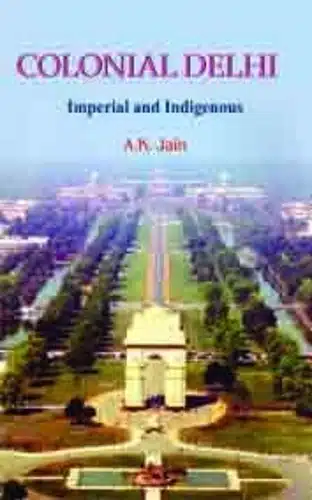
Buddhism and Ethics
₹495 ₹396
Save: 20%

Concept of Pranava in Indian Philosophy
₹650 ₹520
Save: 20%
Colonial Delhi: Imperial and Indigenous
Publisher:
Kaveri Books
| Author:
Jain, A K
| Language:
English
| Format:
Hardback
₹995 ₹796
Save: 20%
In stock
Ships within:
1-4 Days
In stock
| Weight | 240 g |
|---|---|
| Book Type |
SKU:
Category: History
Page Extent:
240
Delhi is a symbol of India’s city building. It is the nerve centre of heritage and modernity, conflicts and contradictions, and richness and poverty. In 1911, King George V announced the shifting of India’s Capital from Calcutta and New Delhi was planned as a showpiece of the glory and magnificence of the British. With the coming up of New Delhi, Shahjahanabad, once one of the most beautiful city of the orient was devalued as a dilapidated, congested, dark, dirty and overcrowded city. To improve the Old City the government in 1937 constituted the Delhi Improvement Trust (DIT). The DIT took up various slum clearance and improvement schemes together with industrial and commercial schemes, which covered about 4,000 Ha of area. These were not the showpiece of Raj, like New Delhi but mark an era of transition of Old Delhi towards planned development. This book narrates the tale of the colonial twins- the Imperial (New) abd DIT’s Delhi. It highlights their interconnections, geographies and contrasts.
Be the first to review “Colonial Delhi: Imperial and Indigenous” Cancel reply
Description
Delhi is a symbol of India’s city building. It is the nerve centre of heritage and modernity, conflicts and contradictions, and richness and poverty. In 1911, King George V announced the shifting of India’s Capital from Calcutta and New Delhi was planned as a showpiece of the glory and magnificence of the British. With the coming up of New Delhi, Shahjahanabad, once one of the most beautiful city of the orient was devalued as a dilapidated, congested, dark, dirty and overcrowded city. To improve the Old City the government in 1937 constituted the Delhi Improvement Trust (DIT). The DIT took up various slum clearance and improvement schemes together with industrial and commercial schemes, which covered about 4,000 Ha of area. These were not the showpiece of Raj, like New Delhi but mark an era of transition of Old Delhi towards planned development. This book narrates the tale of the colonial twins- the Imperial (New) abd DIT’s Delhi. It highlights their interconnections, geographies and contrasts.
About Author
Ashok Kumar Jain, as Commissioner (Planning) with the Delhi Development Authority, worked on Master Plan for Delhi-2021, National Urban Transport Policy, National Urban Housing and Habitat Policy. He is visiting faculty at Delhi School of Planning and Architecture and other institutes. As a Member of the Advisory Board of the UN Habitat he contributed to World Habitat Reports. His writings and works have been widely published. He was awarded 2nd Urban Professional Award 2014 a World Urban Forum in Medellin, Colombia in recognition of being an exemplary city changer.
Reviews
There are no reviews yet.
Be the first to review “Colonial Delhi: Imperial and Indigenous” Cancel reply
[wt-related-products product_id="test001"]
Related products
RELATED PRODUCTS
Proceedings Of The Indian National Congress: Volume 1: 1885 – 1889
Save: 25%
Security In A Complex Era: Emerging Challenges Facing India
Save: 30%
THIS LAND IS MINE, I AM NOT OF THIS LAND CAA-NRC AND THE MAN
Save: 15%



Reviews
There are no reviews yet.